How to Turn Off Camera on a MacBook?

(updated)
Get Free Scanner and check your computer for errors
Fix It NowTo fix found issues, you have to purchase the full version of Combo Cleaner. Free trial available. Combo Cleaner is owned and operated by Rcs Lt, the parent company of PCRisk.com read more.
How to Turn Off the built-in Camera and Internal Microphone on Your Mac?
All Apple computers other than Mac minis contain a built-in webcam called iSight, also known as FaceTime camera. The Mac operating system also contains FaceTime and Photo Booth apps that use the front camera and offer various related functions. iSight is useful for video calls over any distance. Despite these features, some users prefer to disable the device for various reasons.

Privacy is one of the most common reasons why users disable their webcams. It is no secret that cybercriminals use webcams as a way to spy on their victims - taking photographs, recording videos, and sounds with intentions to blackmail.
To protect your privacy, you might want to consider disabling iSight and the built-in microphone. There are several methods to disable webcams, but these options are not found in Mac's System Preferences. There are, however, several methods to disable both the FaceTime camera and built-in mic.
Video showing How to Disable Mac's Built-In Camera?
Table of Contents:
- Introduction
- Cover your built-in webcam
- Use a third-party application
- Prevent your Mac from recording a sound
- Enable camera control on new Safari
- Disable Mac's built-in camera via Terminal
- Video showing How to Disable Mac's Built-In Camera?
Download Computer Malware Repair Tool
It is recommended to run a free scan with Combo Cleaner - a tool to detect viruses and malware on your device. You will need to purchase the full version to remove infections. Free trial available. Combo Cleaner is owned and operated by Rcs Lt, the parent company of PCRisk.com read more.
Cover your built-in webcam
To protect your privacy from cybercriminals, you can simply block the FaceTime lens. This may seem an odd solution, but it is fast and easily accomplished. Even advanced users like Mark Zuckerberg (founder of Facebook) and James Comey (former director of the FBI) use this method: disable iSight using non-transparent sticky tape.
Electrical, masking, or Scotch tape should be sufficient, or even use a sticky note as an alternative. Another advantage of this solution is that you can remove the tape and use the webcam whenever required.
Use a third party application
If you prefer to disable the built-in webcam, you can use a third-party application called OverSight developed by Objective-See. This app monitors Mac's microphone and webcam and alerts the user when the mic or FaceTime camera is activated.
It also displays the process that is accessing this hardware. If you see a process called OSX/FruitFly, OSX/Crisis, OSX/Mokes, or similar, is accessing the built-in webcam or internal microphone, use anti-malware software to scan the Mac, since these processes are known as malware and attempt to spy on computer users.
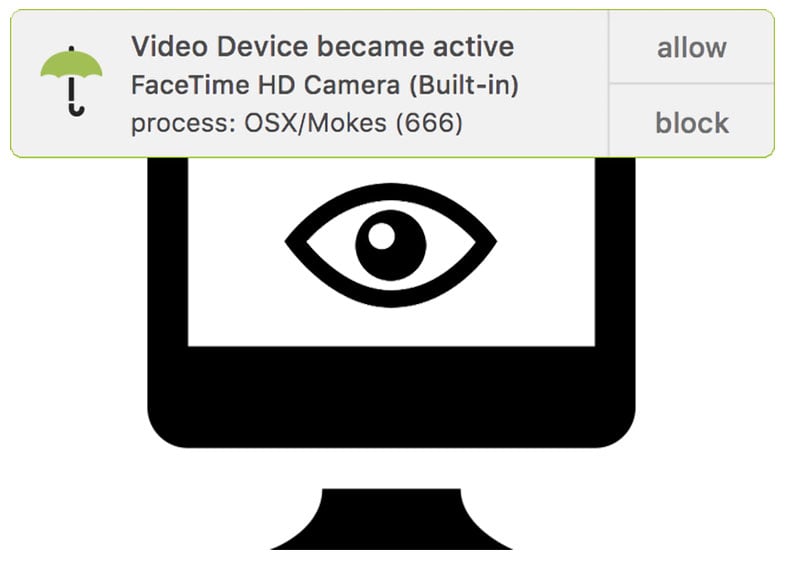
Prevent your Mac from recording a sound
As mentioned above, cybercriminals attempt to take pictures, record video, and record sound. Audio quality is often worse than video or picture, so sound recording often has a lower priority amongst cybercriminals. Therefore, simple solutions are usually enough to protect your privacy. First, you can try to reduce the microphone volume to 0 in Mac System Preferences.
1. Go to System Preferences and open Sound.
2. Select the Input tab, and select Internal Microphone from the list.
3. Below the list, you will see a slider next to Input Volume - set it to zero.
Unfortunately, whenever you need to use the microphone, you must visit this pane and increase the input volume.
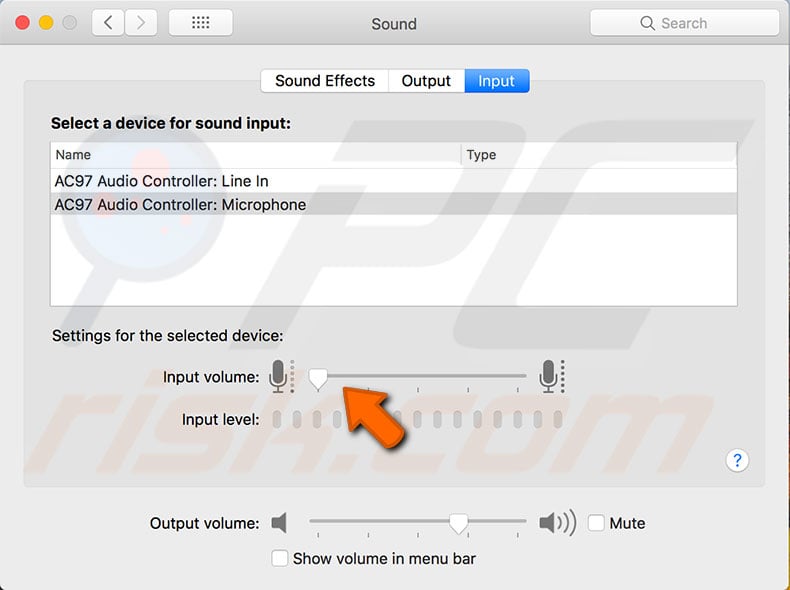
Malware is sometimes developed to adjust the input sound. Fortunately, you can use sticky tape to disable the mic, as with the built-in webcam. In this case, any kind of tape will work: clear, electrical, masking, etc. The internal mic is usually hidden inside the Mac - behind two small holes on the side of the computer, usually near the headphone input.
Enable camera control on new Safari
Apple provided a camera control tool with new versions of Safari. This enables you to manage permissions for websites and extensions to access the webcam. There is also a similar tool to control microphone use. To enable these control tools, follow the steps below:
1. Click Safari in the menu bar at the top of the screen and choose Preferences.
Alternatively, use the keyboard shortcut of Command and comma(,).
2. In the Preferences window, click on the Websites tab and select Camera or Microphone from the list on the left side.
3. Here you will see a list of all websites that have used the webcam or mic - you can set the permissions 'allow', 'ask', or 'deny'. In this window, you can also set permissions for future browsing in the bottom right corner.
This permission will be applied to all other websites not mentioned in the list above. If you choose to set all permissions to deny, no websites will be able to use your webcam and/or mic.
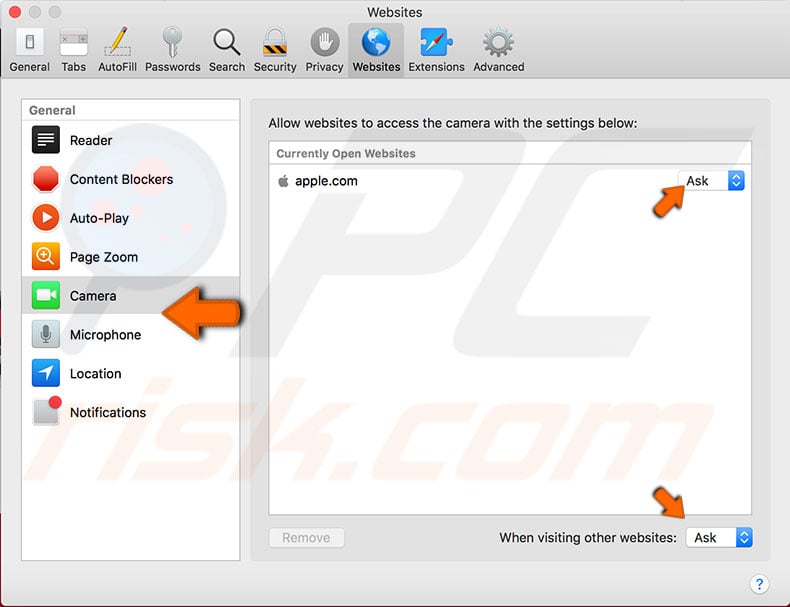
Disable Mac's built-in camera via Terminal
This method will completely disable the hardware, and so the webcam will not be accessible for any purpose. No built-in or third-party applications will be able to activate the camera until you manually re-enable it. This is the best method to protect your privacy, but you will have to repeat some of the steps below to make a video call or take a picture with an application such as a Photobooth.
If you have decided to completely disable the webcam, follow the steps below:
1. Launch Terminal using Spotlight or go to the Utilities folder through Finder.
2. Once Terminal launches, type the following command to create a folder that will store your built-in camera files: mkdir /System/Library/QuickTime/ .iSightBackup
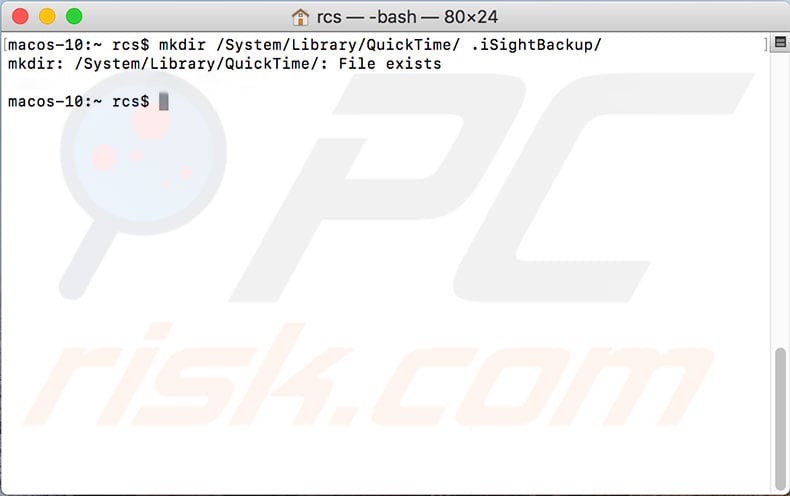
3. Next, move the Quick Time component related to the iSight camera into the new folder. This file gives permissions to apps to access the built-in webcam. In terminal enter the command: sudo mv /System/Library/QuickTime/QuickTimeUSBVDCDigitizer.component /System/Library/QuickTime/ .SightBackup/
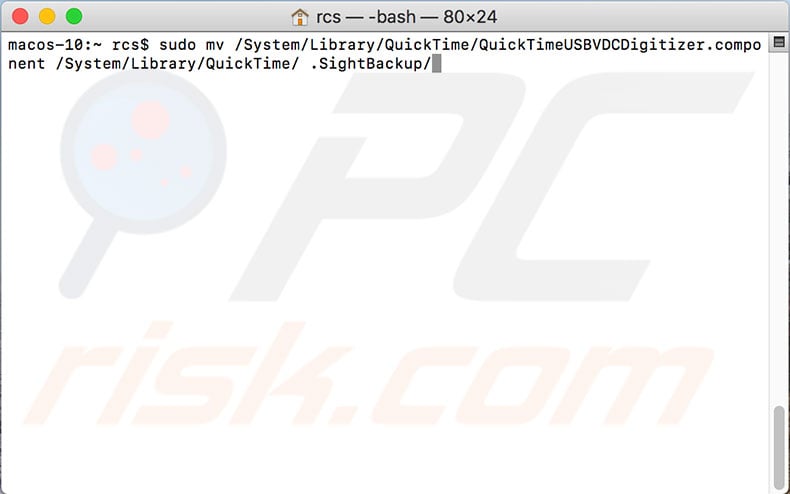
4. Finally, reboot the Mac, and the FaceTime camera will be disabled. You can check it by launching the FaceTime app. If you need to use the iSight camera again, return the component file and reboot the computer.
Share:

Karolina Peistariene
Author of how-to guides for Mac users
Responsible for collecting, analyzing, and presenting problem-solving solution articles related to macOS issues. Years of macOS experience combined with solid research and analyzing skills help Karolina provide readers with working and helpful solutions as well as introduce various features Mac has to offer.
▼ Show Discussion